Naval Gazing: The Enigma of Étienne Bottineau
In 1782, an unknown French engineer offered an invention better than radar: the ability to detect ships hundreds of miles away
/https://tf-cmsv2-smithsonianmag-media.s3.amazonaws.com/filer/20111013012011Port-Louis-Mauritius-in-about-18401.jpg)
Port Louis, Mauritius, August 1782. The French Indian Ocean colony—highly vulnerable to British attack at the height of the American Revolutionary War—is in a state of alert. The governor, Viscomte François de Souillac, has been warned that a flotilla of 11 ships is approaching his island. Fearing that this is the long-awaited invasion fleet, De Souillac orders a sloop-of-war out to reconnoiter. But before the vessel can report, the panic ends. De Souillac is informed that the fleet has altered course and is now steering away from Mauritius. A few days later, when the sloop returns, the governor gets confirmation: the ships were actually East Indiamen, British merchant vessels making for Fort William in India.
All this is remarkable chiefly for the source of De Souillac’s intelligence. The governor had his information not from signals made by ships sailing far offshore, nor from land-based lookouts armed with high-powered telescopes, but from a minor member of the local engineering corps, one Étienne Bottineau. And Bottineau was chiefly renowned in Mauritius (or “Île de France,” to give it its contemporary French name) as a man who won a lot of bets in waterfront taverns thanks to his uncanny ability to foresee the arrival of ships that were anywhere from 350 to 700 miles from the island when he announced their approach.
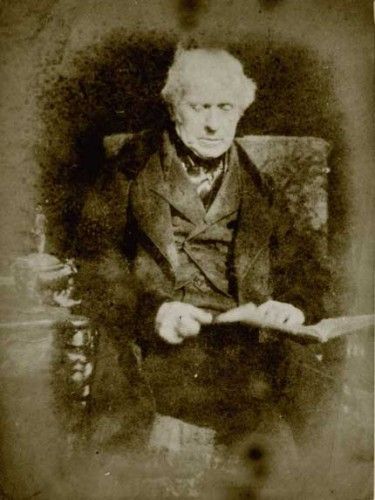
These predictions, he insisted, were the products of neither sorcery nor good luck. They were, rather, the product of rigorous observation and of years of trial and error. For Bottineau claimed to be the inventor of a whole new “science”—famous then, forgotten now—that he called nauscopie: “the art of discovering ships and land at a great distance.”
Today, memory of Bottineau survives only because the Frenchman became a bit-part player in the scientific literature of the early 19th century. He appears there as an enigmatic figure whose life and work were sometimes referenced but rarely critically examined. The Scottish physicist Sir David Brewster, for example, mentions him in his influential Letters on Natural Magic (1832) as “the wizard beacon-keeper of the Isle of France,” and for all his avowed skepticism, Brewster conceded that Bottineau “must have derived his power from a diligent observation of the phenomena of nature.” And the Frenchman’s new “science” remained of interest to at least one naval officer as late as the 1920s, just before the invention of radar rendered the whole idea of nauscopie redundant. Writing in 1928, the British hydrographer Rupert Gould suggested that
there can be little doubt that Bottineau was no charlatan–that he had made a discovery which would be of some interest even in these days of W/T , and must, in his own day, have been of much greater importance.
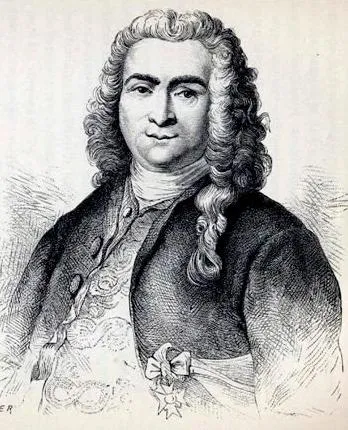
What concerns us here is whether Bottineau’s claims stand up as well as Gould thought they did. There is no doubt that the Frenchman was, at the very least, able to confound many of the most senior officers stationed on Mauritius with the accuracy of his predictions. Colonel Trebond, the officer in charge of the island’s infantry detachment, signed an affidavit confirming that “M. Bottineau has, at different periods, announced to him the arrival of more than a hundred vessels, two, three, or even four days before the coast signals”—adding that “moreover… he stated when there was only one, or when there were several vessels.” And Trebond was backed up by M. Melis, the naval Commissary-General in Port Louis, who swore that Bottineau had predicted the arrival of 109 vessels and been wrong only twice.
De Souillac, meanwhile, was happy to sign a testimonial dated April 18, 1784, summarizing the results of months spent carefully monitoring the engineer’s predictions and confirming his belief that he
sees in nature signs that indicate the presence of vessels, as we assert that fire exists in places where we see the smoke… this is the clearest explanation that he has afforded, in order to show that he did not make the discovery by knowledge of any art, or of any science, or by the application of any previous science…. The signs, he says, indicate clearly enough the presence of vessels, but they only who can read the signs are able to judge of the distances, and this art, he asserts, is an extremely laborious study.
Reading between the lines of the governor’s report it seems that there is still room for some doubt. De Souillac went on to state that Bottineau often lost bets early in his career “because the vessels did not arrive at the appointed time” and “had for a long time been the dupe of his science.” But he seems to have been persuaded that further study had produced solutions for these early problems and that Bottineau’s results had improved considerably:
Since the war has broken out, his announcements have been very numerous, and sufficiently correct to create a sensation in the island. We have conversed with him upon the upon the reality of his science; and to have dismissed him as a quack would have been an injustice…. What we can certify is, that M. Bottineau was almost always right.
Bottineau’s own story, told in biographical fragment and a memoir that he composed in about 1785, is as relatively straightforward as his description of nauscopie itself is stunningly opaque. Born in Anjou, probably some time in the early 1740s, he grew up in Nantes, where “being delighted with the appearance of the port and shipping, he came to the resolution of entering into the sea service.” Employment with the French East India Company and the French Navy followed, and “as early as the year 1762,” he wrote,
it appeared to me that a vessel approaching land must produce a certain effect upon the atmosphere, and cause the approach to be discovered by a practised eye even before the vessel itself was visible. After making many observations, I thought I could discover a particular appearance before the vessel came in sight: sometimes I was right, but more frequently wrong; so that at the time I gave up all hope of success.
In 1764, I was appointed to a situation in the Île de France: while there, having much leisure time, I again betook myself of my favorite observations….
The clear sky and pure atmosphere, at certain periods of the day, were favorable to my studies, and as fewer vessels came to the island, I was less liable to error than was the case off the coast of France, where vessels are continually passing…. I had not been six months upon the island when I became confident that my discovery was certain.”
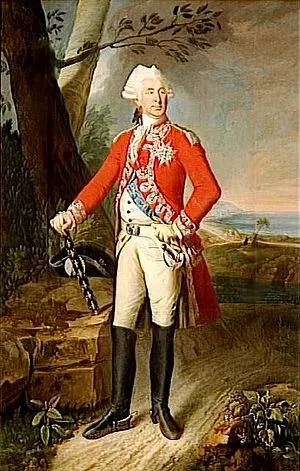
Even so, it took quite some time for Bottineau to make a reputation for himself as an oracle. He wrote that his discovery “caused him to undergo every kind of persecution, and through the malice of his enemies he was treated as a slave and sent to Madagascar during the war of 1778.” He was able to return to Mauritius, though, and by the early 1780s, he seems to have been widely regarded as pretty much infallible. By Bottineau’s reckoning, he “announced the arrival of 575 vessels” between 1778 and 1782, “many of them four days before they became visible.”
By this time Bottineau felt sufficiently confident to attempt to turn a profit from nauscopie. In 1780 he set a letter home addressed to the Maréchal de Castries, then the Minister of Marine, announcing his “discovery” and offering it to the government in return for a substantial fee. Castries, in reply, ordered the French authorities on Mauritius to make a study of Bottineau’s predictions, carefully recording them in a large ledger and comparing them to the actual arrival of ships in the colony for at least eight months. At the end of that time, Bottineau wrote, “I had announced one hundred and fifty vessels in sixty-two informations; none of which had been found to be false.” Certainly he had been successful enough for De Souillac to offer him a testimonial and approve his return to France to lay his case before the Ministry of Marine.
The engineer landed in France in June 1784 and proceeded to Paris. There, however, things began to go badly wrong for Bottineau. De Castries would not see him; the influential Abbé Fontenay, editor of the semi-official Mercure de France ridiculed nauscopie in his paper, suggesting that what was being seen was not “ships at sea, but castles in the air”—and before long the French Revolution put an end to all hope of any reward. As Gould remarked in characteristic style, Bottineau’s “one convert, or semi convert, of note” during this period was of dubious value to him; he was “the famous or infamous Jean Paul Marat… some time a troglodytic inhabitant of the Paris sewers; but latterly, until very properly stabbed in his bath by Charlotte Corday, … one of the three most powerful men of the Terror.” Marat’s name was scarcely one to conjure with after he abandoned his career as a scientist and journalist in favor of becoming the chief supplier of victims to the guillotine; as many as 200,000 people died in the Reign of Terror. It is not very surprising to learn from The Scots Magazine of 1802 that “a Mr. Bottineau, the inventor of a method by which the approach of ships at sea may be discovered … died lately in great misery at Pondicherry.”
Whether one views Étienne Bottineau as a genius, a trickster or a fool depends largely on what one makes of the documents in the case. Setting aside Bottineau’s own deposition, the evidence for nauscopie is drawn almost entirely from just two sources: a packet of papers that belonged to Marat and a short biographical memoir written by Étienne Jouy. Jouy, a one-time army officer and later a playwright, librettist and member of the Académie Française, encountered the “wizard of Mauritius” during a four-year sojourn in Sri Lanka in the late 1780s and had firsthand knowledge of his predictions. Marat’s papers, meanwhile, include affidavits and Bottineau’s own opaque description of his methods, but their provenance is unusual, to say the least. The surviving packet can be found not in a French archive but in a British magazine; the originals are lost; and the identity of the man who copied them remains unknown.
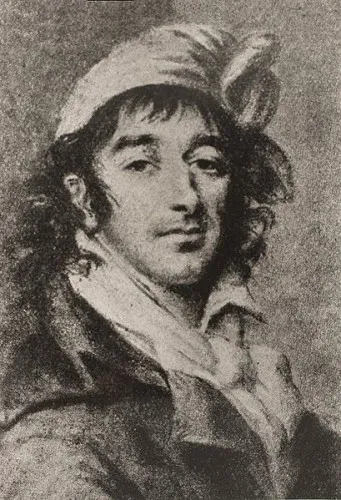
It appears that Marat’s papers must have been seized by the Cabinet Noir—France’s secret postal police—after his murder. With the rise of Napoleon, most of the Cabinet’s holdings from the revolutionary period were deemed surplus to requirements, and when in 1806 a well-connected lady by the name of Madame Guilleminot (sister-in-law to the general of the same name) took up the hobby of collecting autographs and applied to the Emperor’s sister for some samples, “an immense package of letters” from the Cabinet’s files was boxed up and sent to her in Brussels. This collection, which evidently included extracts from the Marat papers, was later sorted by an unnamed British gentleman detained in the city on parole during the Napoleonic Wars; he copied out some of the more interesting items, and on his eventual return to England, these began to appear as a series in The New Monthly Magazine. Given this exotic and uncheckable provenance, it seems worth noting that the New Monthly‘s extracts closely match several excerpts published during Bottineau’s lifetime by The Scots Magazine, which include the most detailed account of the wizard’s day-to-day observations.
The first thing to be noted, in attempting to assess Bottineau’s claims, is that most of the material regarding the details of his predictions comes from his own hand—a lengthy statement regarding the eight-month trial, published by The Scots Magazine in 1786, and an account of his early life and his development of his new “art” that is incorporated in the Marat papers. Since both were written to promote nauscopie to the French Ministry of Marine, they can scarcely be taken at face value. And it is notable that of the four certificates Bottineau presented on his arrival in Paris, only De Souillac’s was dated after the conclusion of the eight-month trial; of the other three, one makes no mention of Bottineau’s results, and the other two, by Trebond and the Commissary-General, relate to his activities in the years leading up to 1782, when a much less careful note was being made of his predictions. De Souillac’s testimonial, moreover, suggests that Bottineau’s results were not quite so consistent as he liked to say; the result of his predictions, the governor wrote, “was, that several vessels that had been announced several days beforehand, arrived at the precise time; several others were delayed, and several did not arrive.”
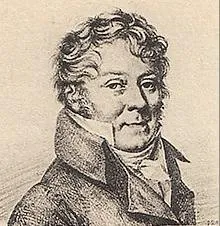
Perhaps some clue as to Bottineau’s success can be found in De Soiullac’s rationalization of these negative results. “It has since been proved, that the delay in the arrival of some of the vessels was occasioned by contrary winds,” he wrote, and “those which did not arrive, M. Bottineau is fully persuaded, were foreign vessels which passed by … whether this be the effect of chance, or otherwise, it would perhaps be imprudent in us to determine.” In other words, Botinneau talked fast enough to worm his way out of looming trouble, and De Souillac was happy to pass the problem up to his superiors. The equivocal content of the governor’s testimonial perhaps explains De Castries’s unwillingness to see the wizard in Paris.
In fairness to Bottineau, however, it must be said that many of the less plausible features of his predictions turn out to be later accretions to his legend. Some accounts of nauscopie suggest that it was so remarkably accurate that its practitioners could see men on the decks of far-distant ships; one suggests that when Bottineau once implausibly announced the approach of a four-masted vessel (three being the maximum fitted in those days), he was proven correct when two two-masted vessels lashed together eventually appeared. No such detailed accounts appear in Bottineau’s writings, which instead describe the atmospheric disturbances he claimed to see and interpret as “a mass of vapours,” a “cloudy mass” or a “meteor” which would eventually “develop the colors assume a certain tone.” Then, as a ship approached, the “mass” would “extend and become consistent.”
Whatever it was that Bottineau saw, or claimed to see, it was certainly not easily visible to anybody else. But while it would be tempting to conclude that nauscopie was either an hallucination or a confidence trick—which the wizard’s eagerness to profit and haste to explain away his failures certainly suggests—it must be noted in closing that he was not the only man who practiced it. As late as 1818, a Royal Navy captain, Francis Maude, met an old Mauritian who told him that he had been instructed in the art by Bottineau himself, and who had—Maude said—”unvarying success.” A Mr. Thomas Trood claimed in 1866 to have rediscovered Bottineau’s secret and codified it while stationed in Samoa. And the highly skeptical James Prior, a British naval officer who visited Mauritius in 1811 and thought that the idea of nauscopie seemed dangerously close to “second sight,” still noted in his journal that “whether true or false, one of the persons thus gifted is said to have received a pension some years ago for his talent. This man communicated to government, that he had distinctly observed, from the island, the shipwreck of a vessel in one of the ports of Madagascar though laughed at, he persisted in his story, mentioned the day, the hour and the precise scene of her distress, all of which being duly registered, turned out afterwards to be correct; the distance is only about 400 miles.”
Well; it is just a story; Prior’s nauscopist was only “said” to be receiving a pension; and the detail of his predictions surpassed by a worrying margin anything that Bottineau ever claimed. Nor was more ever heard of Thomas Trood. But if the wizard was correct in suggesting that nauscopie can only be effectively practiced miles away from the cold and crowded sea lanes of the North Atlantic, in the gentle, balmy waters of the tropics, it is still pleasant to speculate on what might be achieved by someone with good eyesight, a hammock and a few years to spare on a beach in Mauritius. Might it be possible to get a grant for that?
Sources
Anon. ‘Foresight.’ In The Asiatic Journal and Monthly Register, April 1826; Anon. ‘Nauscopie: the art of discovering the representation of ships, when one hundred leagues and upwards distant.’ Reprinted from The New Monthly Magazine by the Museum of Foreign Literature, Science and Art, August 1833; Anon. Nauscopy. The Scots Magazine, April 1786; Anon. ‘Extraordinary theory as to seeing objects at immense distances.’ Leeds Mercury, May 15, 1866; Anon. ‘The science of Nauscopia.’ In Every Saturday, October 30, 1869; Anon. ‘Nauscopy.’ Pall Mall Gazette, 11 June 1897; Rupert Gould. Oddities: A Book of Unexplained Facts. London: Geoffrey Bles, 1944; Lawrence Green. Eight Bells at Salamander: The Unwritten Story of Ships and Men in South African Waters… Cape Town: Howard Timmins, 1961; Richard Phillips (ed). New Voyages and Travels. London: privately printed, 1819.
/https://tf-cmsv2-smithsonianmag-media.s3.amazonaws.com/accounts/headshot/mike-dash-240.jpg)
/https://tf-cmsv2-smithsonianmag-media.s3.amazonaws.com/accounts/headshot/mike-dash-240.jpg)